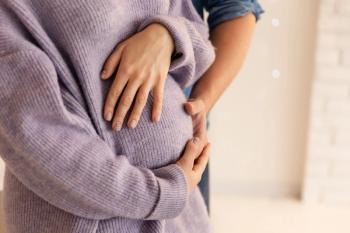
Sleep apnea may worsen joint pain, fatigue in postmenopausal women
A study published in Menopause, the journal of the North American Menopause Society (NAMS), investigated the association between sleep apnea and the various physical and psychological symptoms that occur during menopause.
The study builds on the knowledge that sleep apnea increases as women transition to menopause, with the prevalence of sleep apnea 4.5 times higher in postmenopausal women than premenopausal women.1
The study results suggest a significant association between sleep apnea and joint pain, with higher respiratory distress scores linked with joint pain severity. According to a release from NAMS, 1 explanation may be that joint tissues have estrogen receptors, and estrogen plays a role in maintaining the homeostasis of articular tissues, like cartilage, ligaments, and muscles.
Over the course of 1 night, researchers monitored the respiratory disturbance index (RBI), number of times apnea-hypopnea occurred in an hour, and transcutaneous oxygen saturation (SpO2) in 51 postmenopausal women who did not have an improved subjective sleep quality with the use of hypnotics. They evaluated physical and psychological health statuses and subjective sleep disturbances via validated questionnaires, including the Epworth Sleepiness Scale, the Cornell Medical Index, and the Questionnaire for Assessment of Climacteric Syndrome in Japanese women. Separately, they analyzed RDI, nadir Sp02), and various symptoms, as well as cardiovascular parameters, such as blood pressure, serum lipid profile, and glucose tolerance, were analyzed separately.
Among the study’s 51 participants (13.7%) were diagnosed with obstructive sleep apnea. After adjusting for age, body mass index, and background factors related to RDI and nadir Sp02, they found that the association remained significant between a higher RDI and joint pain (Questionnaire for Assessment of Climacteric Syndrome in Japanese Women) (standardized partial regression coefficient [β] = 0.423, P = 0.016), and between lower nadir Sp02 and fatiguability (Cornell Medical Index) (β = −0.472, P = 0.007).
The study authors advocate that detailed examination of sleep-disordered breathing is warranted in women with severe joint pain and fatiguability.
"This study highlights an opportunity to increase identification of women with OSA [obstructive sleep apnea], which is underdiagnosed in women who often present with vague symptoms such as insomnia, fatigue and morning headaches. According to these findings, joint pain may be another symptom that should prompt consideration of a diagnosis of OSA in women," said Stephanie Faubion, MD, medical director of NAMS in a recent press release.2
References
- Odai, Tamami MD, PhD1; Terauchi, Masakazu MD, PhD, NCMP1; Umeki, Hidenori MD2; Miyasaka, Naoyuki MD, PhD3; Somekawa, Yoshiaki MD, PhD2 Sleep apnea in postmenopausal women is associated with joint pain severity and fatigability, Menopause: February 28, 2022 - doi: 10.1097/GME.0000000000001974
- Petridis E. Accessed March 23, 2022. http://www.menopause.org/docs/default-source/press-release/sleep-apnea-and-joint-pain.pdf
Newsletter
Get the latest clinical updates, case studies, and expert commentary in obstetric and gynecologic care. Sign up now to stay informed.










